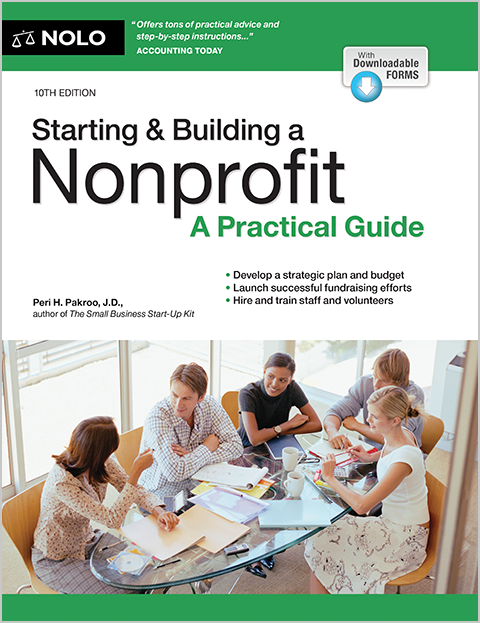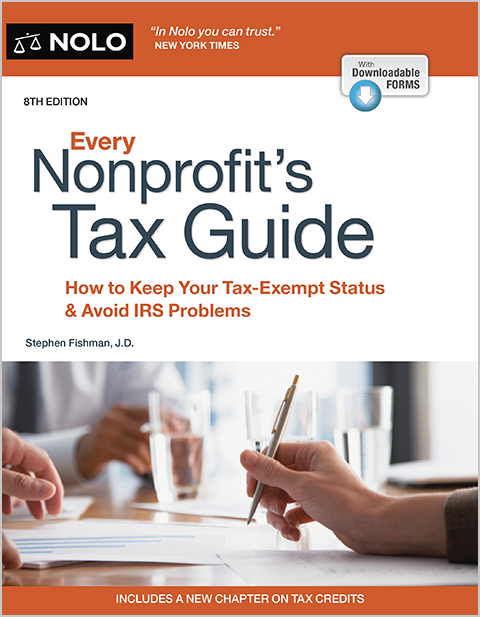Find out how to go about dissolving a nonprofit corporation in your state.
If you choose to close down a Minnesota nonprofit corporation, you'll need to go through a process called "dissolution." Dissolution requires a vote or other formal authorization, the filing of key documents with government agencies, and a group of other tasks collectively known as "winding up" the corporation.
The specific steps for closing a nonprofit organization will vary depending on several basic facts. Bearing that in mind, this article is limited in the following ways:
- it only covers Minnesota nonprofit corporations (not all nonprofits are incorporated)
- it only covers nonprofits that have applied to the IRS and been approved specifically as 501(c)(3) tax-exempt organizations (not all nonprofits are exempt from paying taxes, and not all tax-exempt nonprofits are 501(c)(3) organizations)
- it only covers voluntary dissolution based on a decision by the nonprofit's directors and, where applicable, the nonprofit's members (a nonprofit may be involuntarily dissolved through a court order, or for administrative reasons such as failing to file an annual renewal); and
- it only covers the dissolution and winding up of nonprofits that have already named or elected a board of directors (there are streamlined procedures for dissolving nonprofits that don't yet have a board of directors).
Benefits of Formal Dissolution
Your nonprofit corporation is registered with the State of Minnesota. Through the dissolution process, you will officially cancel that registration and officially end the corporation's existence. For a nonprofit that is closing down, a properly handled dissolution achieves at least two important goals. First, it ultimately will put your organization beyond the reach of creditors and other claimants. Second, it will allow you to fulfill your legal obligations regarding the proper distribution of any remaining corporation assets.
Authorizing Dissolution
The procedure for authorizing dissolution will vary depending on whether, in addition to a board of directors, your nonprofit corporation also has members with the right to vote. You probably already know if your nonprofit has such members. However, if you're unsure, you should check your articles of incorporation, bylaws, or similar organizational documents.
Minnesota's Nonprofit Corporation Act ("NCA") provides for voluntary dissolution through either:
- a vote of the members entitled to vote on dissolution; or
- if there are no such members, a vote of the directors.
If your nonprofit has voting members, the board must first adopt a resolution to dissolve the corporation. Adoption of the resolution requires the votes of a majority of the directors. The resolution must include a plan of dissolution that states where remaining assets held by the nonprofit will be distributed after creditors are paid. You then have to submit the resolution and plan to the voting members, who must meet and vote on the resolution. You are required to give five days advance notice of the proposed member meeting to each member entitled to vote. The NCA does not clearly specify whether dissolution can be approved by a less-than-unanimous vote of members, and instead states only that, "If the proposed dissolution is approved by the members with voting rights, the dissolution must be started." Therefore, if you have voting members, you may want to check your articles of incorporation or bylaws for any provisions regarding the number or percentage of members needed to approve dissolution.
If your nonprofit does not have voting members, only the board must vote on the proposed dissolution. As already stated, the NCA requires a majority vote of the directors for approval.
If you dissolve based on a vote, make sure to properly record both the board's resolution and plan, the directors' votes, and, where necessary, the members' votes. You'll need this information for filings with the state and the IRS.
In cases where a nonprofit corporation has voting members, the NCA also allows you to avoid a vote at a formal meeting if all members entitled to vote provide their written consent to dissolve. For dissolution through written consent to be effective, all voting members must sign and date a written consent form.
Notice of Intent to Dissolve
After your board (and, where applicable, voting members) have approved the dissolution, you must file two notices of intent to dissolve: one with the Secretary of State ("SOS") and one with the Office of the Attorney General ("AG"). No form is available for the notice to be submitted to the SOS, so you will have to draft your own. The NCA states that the notice of intent to dissolve to be submitted to the SOS must contain:
- the name of your nonprofit
- the date and place of the meeting at which the resolution was approved by the board under, and by the members under if applicable; and
- a statement that the requisite approval of the directors and members was received.
Filing your notice with the SOS generally does not affect legal claims by or against your organization.
A blank form for the notice to be submitted to the AG is available on the AG website. The notice for the AG requires substantially more information than the notice for the SOS, including detailed information about your nonprofit's assets and how they will be transferred. Note: As a general rule, you cannot transfer or convey any of your organization's assets for at least 45 days after giving notice to the AG. This is known as the "waiting period." Moreover, in some cases, the AG may extend the waiting period by an additional 30 days.
"Winding Up"
Following member or board approval of dissolution, your corporation continues to exist only for the purpose of taking care of certain final matters that, collectively, are known as "winding up" the company. It may be appropriate to designate one or more officers and/or directors to handle these matters.
Under the NCA, the main winding-up tasks are:
- collecting, debts due or owing to your nonprofit
- paying your nonprofit's debts, obligations, and liabilities
- selling, leasing, transferring, or otherwise disposing of all or substantially all of your nonprofit's property and assets
- properly distributing tangible or intangible property, including money, remaining after the discharge of the nonprofit's debts, obligations, and liabilities.
There are a few points you should keep in mind regarding the last two listed tasks. First, bearing in mind the AG's "waiting period," you won't be able to take care of some of these tasks until you've received the AG's approval.
Second, your nonprofit has an obligation to distribute its assets according to a particular order of priority:
- you must return any assets held for "special use" (this might, for example, include items formally on loan to your organization)
- you must pay any costs associated with the dissolution proceedings, including attorney fees
- you must pay all of the nonprofit's debts, liabilities, and obligations; and
- you must make any distributions required by your articles of incorporation or bylaws.
Note that distributions are made only after you have paid all debts, liabilities, and obligations. In addition, be aware that the distribution of assets is subject to the limitations of Minnesota's laws regarding charitable trusts.
Finally, a dissolving 501(c)(3) organization must distribute its remaining assets for tax-exempt purposes. In practice, this generally means distributing the remaining assets to another 501(c)(3) organization. If you have any questions about whether this requirement applies to your nonprofit, you should check with a lawyer.
Notice to Creditors and Other Claimants
After filing your notices of intent with the SOS and AG, you have the option to give notice of the proposed dissolution to creditors and any potential claimants against your nonprofit. Giving notice requires both publishing in a newspaper once a week for four consecutive weeks and mailing notice directly to known creditors and claimants. Generally, claimants have at least 90 days to respond to the notice. (If you do not give notice, creditors and claimants generally have two years to bring claims.) There are a variety of additional rules both about how to give notice and how to respond to claims; some of these rules can be hard to understand. Therefore, if and when you choose to give notice to creditors and other claimants, you should consider getting assistance from an attorney.
Filing with Attorney General
When you have completed winding up your nonprofit, including transferring "all or substantially all" of your nonprofit's assets, you must send the AG a list of persons to whom the assets were transferred or conveyed. There is no form or template available for this document. You should contact the AG for more details.
Articles of Dissolution
Finally, once you have finished winding up your nonprofit—including paying, or providing for payment of, creditors and claimants, and filing your list of transferees with the AG (see just above)—you must file articles of dissolution with the SOS. The articles of dissolution must state:
- whether you gave notice to the creditors and claimants of your nonprofit by publication and mailings
- if you did give notice, the last date on which the notice was given and (a) that the payment of the creditors and claimants filing a claim within the time period required by law has been made or provided for, or (b) the longest period under the law within which claims must be brought has expired
- if you did not give notice, that your nonprofit's debts, obligations, and liabilities have been paid and discharged or that adequate provisions have been made for them
- that the remaining assets of the corporation have been distributed according to the NCA's order of priority, or that adequate provision has been made for the distribution
- that there are no pending legal, administrative, or arbitration proceedings by or against your nonprofit, or that adequate provision has been made for the satisfaction of a judgment, order, or decree that may be entered against it in a pending proceeding; and
- if applicable, that you sent a notice of intent to dissolve to the AG and the waiting period has expired or has been waived by the AG.
There is no form or template available from the SOS for your articles of dissolution. (There is a form available from the SOS for new nonprofits that which haven't yet named a board of directors, but that form is not applicable here.) Therefore, you'll need to draft this document yourself. You should strongly consider getting an attorney to assist you with this filing.
Federal Tax Note
For federal tax purposes, you'll need to file IRS Form 990 or IRS Form 990-EZ. You must include a completed Schedule N (Liquidation, Termination, Dissolution, or Significant Disposition of Assets) and copies of your articles of dissolution, resolution to dissolve, and any written dissolution plans. When completing either Form 990 or Form 990-EZ, you'll need to check the "Terminated" box in the header area on Page 1 of the return. For additional, more specific guidance, check out Every Nonprofit's Tax Guide, by Stephen Fishman (Nolo), go to the IRS website, or consult with a tax professional.
Additional Information
You can find additional information, such as forms (where available), mailing addresses, phone numbers, filing fees, and general guidance, on the SOS website and the AG website.
Dissolving and winding up your nonprofit corporation is only one piece of the process of closing your organization. For further, general guidance on many of the other steps involved, check Nolo's 20-point checklist for closing a business and the Nolo article on what you need to know about closing a business.



